Our scleral lenses are designed to minimize refits by prescribing lenses directly from surface measurements and based on user-input requirements. View virtual fits and customize lens parameters with the goal of achieving optimal fits for every eye in one platform.
Seamless Integration
Minimize Your Refits

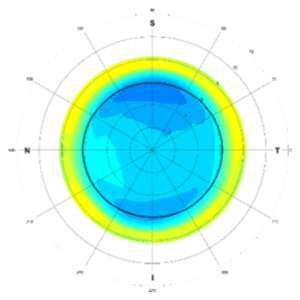
2D Lens Elevation
Showing a virtual lens fit over the eye. Blue is vault; yellow is even 360° landing.
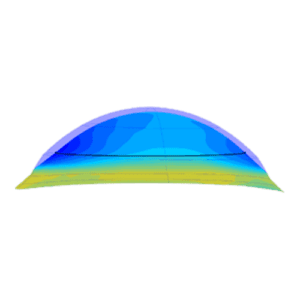
3D Lens Elevation
Sideview of the lens (purple) vaulting over the cornea & limbus with a toric haptic landing.
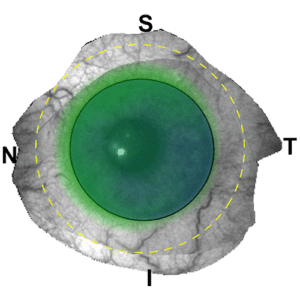
Flourescein Sim
Flourescein simulation showing the lens on the eye; including limbal clearance.
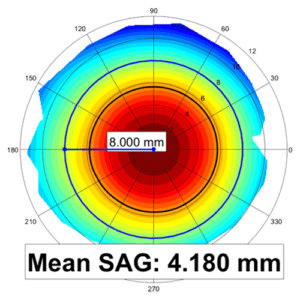
Sag Height
Displaying the sag of the eye at a 16mm diameter. View the sag at any diameter & at individual points.
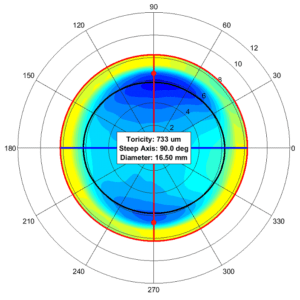
Scleral Toricity
Displaying exactly how much (733μ) toricity and location (90°) of the steep axis.
Our Proprietary Stitching Method
How do we stitch?
Utilizing the proprietary stitching algorithm, the sMap3D™ combines multiple gaze directions into a complete model of the ocular surface, minimizing eyelid interference. Map the entire cornea and sclera, with a true range of greater than 22mm diameter, 360° around.

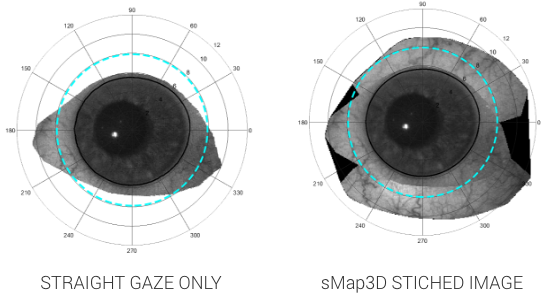
Why do we stitch?
The use of the straight gaze (only one image) frequently provides insufficient superior and inferior scleral coverage to accurately measure the full surface of the eye out to the diameter of the scleral lens. Full data coverage is required for accurate sag and scleral toricity measurements, which are critical to optimal scleral lens fit.


